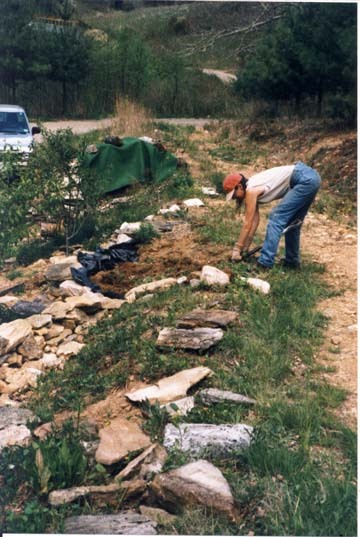Page added on April 22, 2011
Let’s get real about the oil sands
HYDROCARBONS will play a vital role in meeting global energy demand for decades. This is a view shared by Canada’s oil-sands producers and independent energy analysts, such as the International Energy Agency (IEA).
The IEA estimates 1.4bn people – more than 20% of the global population – live without electricity. Canada’s oil sands are uniquely positioned to help address the problem of widespread energy poverty. The IEA predicts worldwide energy demand will increase by 36% between 2008 and 2035, and that more than 90% of the growth will come from non-OECD, developing countries, led by China and India. But the US will remain the world’s second-largest energy consumer, behind China and ahead of India.
According to the IEA, fossil fuels – oil, coal and natural gas – will remain the dominant energy sources in 2035, when oil alone will provide 28% of the energy mix. Over the same period, the amount of energy contributed by renewable sources – hydro, wind, solar, geothermal, biomass and marine – doubles to about 14%.
Given the projected growth in global energy demand, the world will need all forms of energy for several decades. As conventional oil production declines, Alberta’s abundant oil-sands reserves – the third-largest source of oil on the planet – provide a unique opportunity for Canada to play a vital role in responsibly meeting demand. Technology and innovation are enabling development of an increasing proportion of the oil sands resource with a reduced environmental footprint and at a lower cost.
Meeting global demand
Production from the oil sands will reduce North America’s need for foreign oil, making those supplies available to meet demand in other parts of the world. And, depending on the pace of development, the oil sands could play a direct role in meeting global market needs through exports.
The Canadian Association of Petroleum Producers (Capp) forecasts continued long-term oil-production growth in Canada. We expect total Canadian output to rise steadily: from 2.8m barrels a day (b/d) in 2010, to 4.3m b/d in 2025. Oil-sands production will drive this growth, contributing about 3.5m b/d in 2025, compared with 1.5m b/d in 2010.
The oil-sands industry is focused on: energy security and reliability; economic growth; and environmental performance. The goal is to ensure the oil sands are developed responsibly, through continuous improvement in environmental and social performance.
And the oil sands’ environmental performance has made demonstrable improvements, including: a 39% reduction (since 1990) in greenhouse-gas (GHG) emissions per barrel of oil produced; increased use of recycled or non-potable water; reduced surface disturbance; and development of game-changing technology for tailings-pond reclamation.
 |
New and emerging technological innovations will continue to improve environmental performance. These include processes that combine solvents with steam to improve oil-recovery rates and reduce GHG emissions; technologies to process bitumen and remove the heaviest hydrocarbon components on-site; non-water extraction techniques to reduce, or even eliminate, the need for water and wet tailings ponds.
But the opportunity for increased hydrocarbon production must be reconciled with the need for a transition to a lower-carbon energy system and with global initiatives to reduce GHG emissions. Views differ greatly on the pace of this transition and an appropriate, realistic time-line is essential, balancing environmental concerns with economic competitiveness and security of supply needs. These issues are best dealt with in the broader context of Canadian and global energy systems, rather than solely with respect to the oil sands.
Climate-policy initiatives are already in place in some jurisdictions in Canada, including Alberta, home to the majority of Canada’s oil-sands deposits. For example, industry already pays a price on carbon of $15 a tonne under Alberta legislation, the first carbon legislation of its kind in North America. Revenues accumulate in a technology fund earmarked for reinvestment in GHG reduction solutions, such as carbon capture and storage and energy-efficiency advancements. (The Alberta carbon price is comparable with the price paid under the EU’s carbon-trading regime.)
According energy consultancy IHS Cera, oil-sands crude is about 6% more GHG intensive than the average US crude supply on a full life-cycle, or wells-to-wheels basis. This figure is significantly lower than other often-quoted percentages for oil-sands crude. And, over time, oil sands crudes will be competing with heavier crudes as the world’s oil supply shifts steadily from light, conventional oil to heavier, unconventional supplies.
Import policy related to GHG emissions from oil is under consideration in the EU. But it inappropriately singles out oil-sands crude when it is apparent the oil’s carbon footprint is similar to other heavy and conventional oils produced with associated natural gas flaring.
Technology and innovation will be vital in addressing Canada’s GHG reductions. Capp recognises the need to constantly reduce GHG emissions from operations, with the objective of being to perform as well, or better, than competing global oil supplies.
While properly designed policy is an important enabler for cleaner technology, emissions-reduction opportunities must be available to energy producers, transporters and consumers at a reasonable cost. The development and deployment of GHG-reduction technology must be a priority for industry, governments, academia, research institutions and other organisations in Canada.
Taking action
Oil-sands producers are taking action to reduce GHG emissions associated with their operations. These initiatives are not only vital for the environment, but make good business sense – they lower capital and operating costs.
The oil-sands debate must be about environmental performance, economic growth and jobs, and energy security and reliability – all are important. A sense of realism must be retained about the pace and scope of transition to a lower-carbon energy system and the role the oil sands will play in the world’s future energy mix.
The oil-sands industry is working hard to engage in a constructive and balanced dialogue about responsible development with many forward-thinking, solutions-oriented people. We’re focused on developing solutions that contribute to meeting global energy needs in a responsible way for many years to come. We encourage others to join us.


Leave a Reply